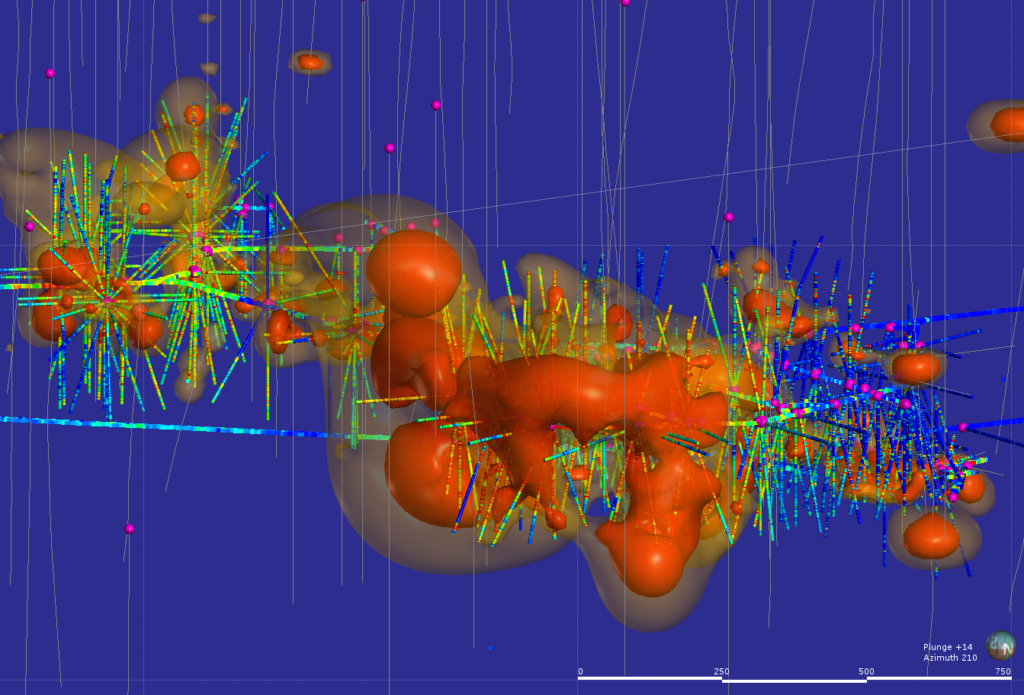Following the publication of the paper (noted below) on the epithermal portion of the Recsk metallogenic system in Hungary here are 3D models from the entirely concealed Cu-Au mineralized intrusive bodies and related Cu-Au skarns and outbound Zn-Pb replacement bodies.

A 3D fly-though of the Recsk Cu-Au deposit showing the drilling, channel samples and interpolated copper grade shells. A full set of 100 metre spaced section steps through the deposit from north to south over several kilometres.

A section through the Recsk deposit with drilling and copper grade shells. The section is 200 metres thick and the 0.3% grade shell is 800 metres high and 1,000 metres wide. The Cu-Au skarn mineralisation can be seen dipping gently away from the large intrusive body. The intrusion is open at depth below 1,200 metres. The top of the 10.3% copper grade shell is approximately 400 metres below the surface.

The Recsk metallogenic centre consists of a deep and entirely preserved mineralised intrusive and intermediate and high sulphidation epithermal deposits exposed at surface. The epithermal deposits are located close to the apex of the intrusion. The diorite intrusion is hosted by a thick sequence of Eocene carbonates unconformably overlain by a volcanic edifice. Adjacent to the intrusion the carbonates host thick Cu-Au skarns. Outbound of the Cu-Au skarns, Zn-Pb replacement bodies have been intersected in wide spaced drillholes. In this video we present a section through the deposit. The 3D model is based upon 156,000 metres of drilling from surface, 9 km of underground sampling on the 700 and 900 metre levels and 89,000 metres of underground diamond drilling. Underground access was provided by two 1,200 metre deep shafts, 2,000 metres apart. The shafts have an 8 metre internal diameter and are concrete lined. No mining has been undertaken at the deeper Recsk mineralisation aside from bulk metallurgical sampling.